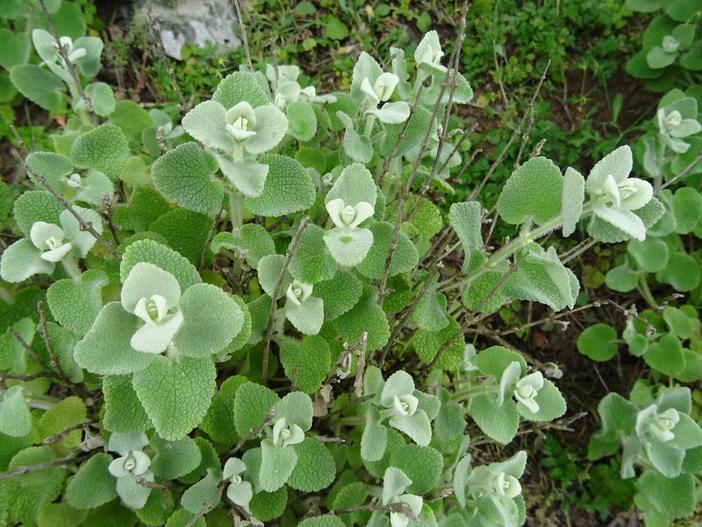Greek Horehound
(Ballota pseudodictamnus)
Greek Horehound (Ballota pseudodictamnus)
/
/

Olive Titus
PDM 1.0
Image By:
Olive Titus
Recorded By:
Copyright:
PDM 1.0
Copyright Notice:
Photo by: Olive Titus | License Type: PDM 1.0 | License URL: https://creativecommons.org/publicdomain/mark/1.0/ | Uploader: olive.titus | Publisher: Flickr



























Estimated Native Range
Summary
Ballota pseudodictamnus, commonly known as Greek Horehound, is an evergreen perennial herb native to rocky hillsides and scrub areas of the Eastern Mediterranean, including Greece and the islands of Crete and Cyprus. It typically grows to about 50 centimeters (20 inches) tall and wide, presenting a mounded form. The plant is characterized by its almost circular, dished, silver-green leaves that have a soft, felted texture, which makes it quite tactile and visually appealing in the garden. The pink flowers, which bloom in late spring to early summer, are often somewhat obscured by the foliage but add a subtle charm when noticed.
Greek Horehound is valued for its drought tolerance, low maintenance requirements, and its ability to thrive in poor, well-drained soils, making it an excellent choice for rock gardens, xeriscaping, and coastal planting where conditions can be harsh. It is also used as an ornamental foliage plant in borders and as ground cover. This plant has been recognized with the Royal Horticultural Society’s Award of Garden Merit, indicating its exceptional performance in UK gardens. It requires very dry conditions and sharp drainage in full sun. While it tolerates temperatures as low as −10 °C (14 °F), it may suffer in wet, cold winters if drainage is not adequate.CC BY-SA 4.0
Greek Horehound is valued for its drought tolerance, low maintenance requirements, and its ability to thrive in poor, well-drained soils, making it an excellent choice for rock gardens, xeriscaping, and coastal planting where conditions can be harsh. It is also used as an ornamental foliage plant in borders and as ground cover. This plant has been recognized with the Royal Horticultural Society’s Award of Garden Merit, indicating its exceptional performance in UK gardens. It requires very dry conditions and sharp drainage in full sun. While it tolerates temperatures as low as −10 °C (14 °F), it may suffer in wet, cold winters if drainage is not adequate.CC BY-SA 4.0
Plant Description
- Plant Type: Herb
- Height: 1-1.5 feet
- Width: 2-3 feet
- Growth Rate: Moderate
- Flower Color: Pink
- Flowering Season: Summer
- Leaf Retention: Evergreen
Growth Requirements
- Sun: Full Sun
- Water: Low, Medium
- Drainage: Medium, Fast
Common Uses
Bee Garden, Border Plant, Drought Tolerant, Fragrant, Groundcover, Low Maintenance, Potted Plant, Rock Garden, Salt Tolerant
Natural Habitat
Rocky hillsides and scrub areas in the Eastern Mediterranean
Other Names
Common Names: Grecian Horehound, Greek Horehound, False Divinity
Scientific Names: , Ballota pseudodictamnus, Pseudodictamnus mediterraneus, Marrubium pseudodictamnus, Pseudodictamnus mediterraneus subsp. mediterraneus, Beringeria pseudodictamnus, Beringeria pseudodictamnus oppr, Marrubium pallidum,
GBIF Accepted Name: Ballota pseudodictamnus (L.) Benth.